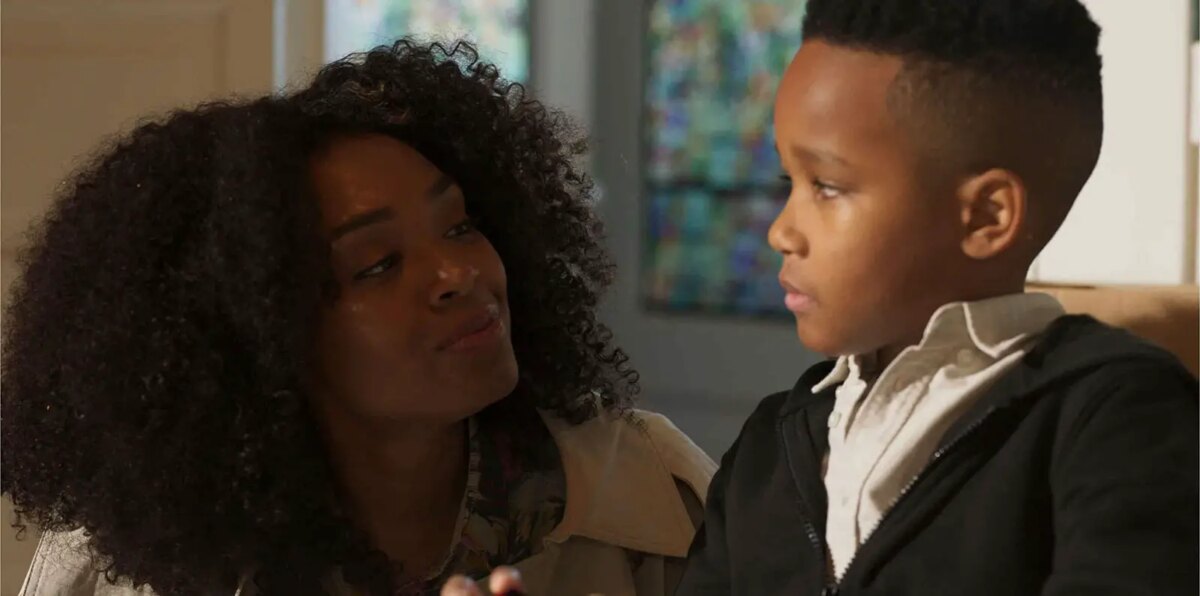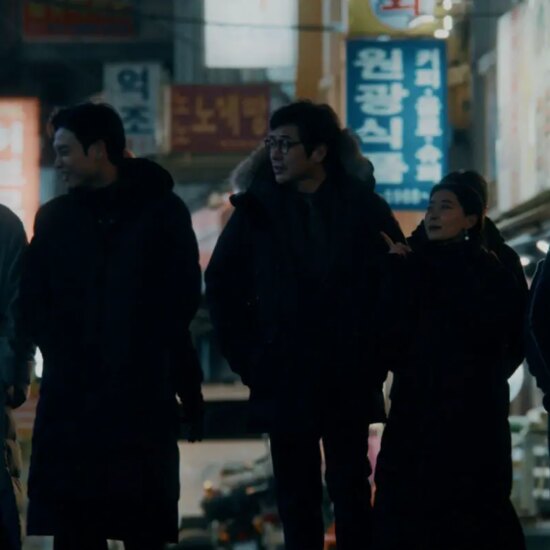
Would a rose by any other name smell as sweet? Would the color red by any other name appear just as vibrant? Maybe our senses play tricks on us, or perhaps all of our senses perceive the world around us in a different way. Ok, this is getting a bit meta. But these are thoughts that might pop into your head when watching Colorblind, from director/co-writer Mostafa Keshvari and co-writer Selina Williams.
Colorblind is a social commentary-infused drama about a black female artist named Magdalene (Chantel Riley), who moves into a new apartment with her young son, Monet (Trae Maridadi). They are very close, sharing a special bond and the same condition of colorblindness, causing them to see the world’s colors very differently than other people. Immediately, the two encounter adversity when they have a brief run-in with a white female police officer just outside their apartment building.
The situation escalates when her son sprays the police officer with his water gun to defend his home. Magdalene manages to diffuse the situation by confronting and calling out the police officer’s excessive show of force. Then, Magdalene meets her new landlord, Walton (Garry Chalk), while attempting to pay her rent. After a racially charged conversation, the message is unambiguous here: Magdalene and Monet are not wanted. These kinds of racist interactions are peppered throughout, alluding to the double entendre of the title.
The condition that afflicts Magdalene and Monet plays a significant role in causing further issues with their relocation. In one situation, Magdalene finds herself on the street trying to sell some of her artwork to passersby. Her inability to distinguish colors leads to an awkward encounter that ends without a sale. Mother and son try to keep their condition a secret for as long as possible out of fear of being treated differently. Though Colorblind never discusses the type of colorblindness these two suffer from, they are able to appreciate and enjoy pomegranates together. The fruit stands as a symbol of their relationship throughout the rest of the film (a subtle nod to The Color of Pomegranates, perhaps?).
“…the unfolding relationship between this aged, grumpy white man and a young inquisitive black boy…”
Magdalene’s racially charged problems continue, along with certain circumstances, force Monet and Walton to spend significant time together. Through eating dinner, playing chess, and talking, they learn about one another and gain a new perspective. Watching the unfolding relationship between this aged, grumpy white man and a young inquisitive black boy is where this story shines. Both are well-written characters; their interactions feel genuine while throwing in a bit of humor. Plus, there’s beautiful cinematography on display. The shots are often tight and intimate, placing audiences right in the room with these characters.
Though the frames are lovely, the story stumbles a bit, particularly in portraying the relationship between black and white people. The racist tropes are too over the top and unbelievable to take seriously, which is a shame because true racism is a serious subject. The situations depicted in Colorblind seem like how someone might imagine a racist encounter to play out rather than based on a real experience.
I was hoping this drama would provide a little more explanation about the color blindness that Magdalene and Monet suffer from. But Keshvari and Williams never explore it. As someone who has a family member with this condition, I was expecting more. Sometimes the characters see only black and white; other times, they can’t see yellow or green only; it is confusing. Nevertheless, it works well as a plot element and as an analogy for what the main characters experience.
I think Colorblind was made with great intentions, with the hope of bringing people together while building empathy for one another. The underlying message of caring for each other is heartfelt and genuine. The movie manages to lean into the socio-political, cultural zeitgeist while telling an interesting story.














